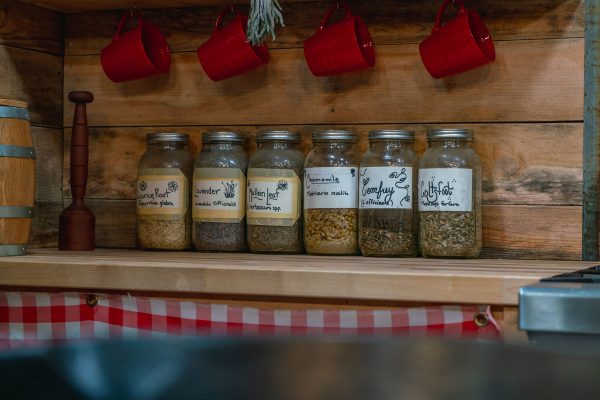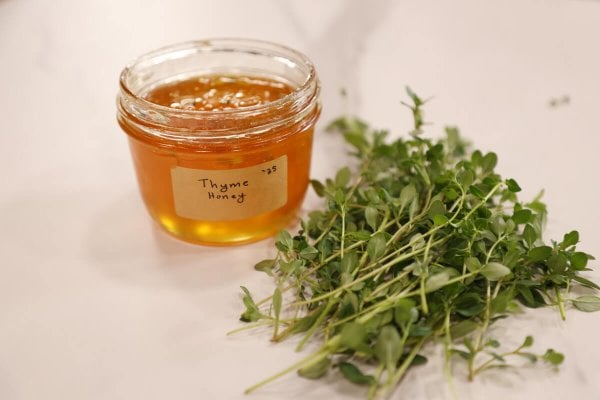Are you ready to discover a beef tongue recipe that is not only easy to make but also incredibly tasty? Well, you’re in for a treat! Get your apron on, and let’s dive into the world of cooking delicious beef tongue!

How many times did you need to read that recipe title? Yes, beef tongue is edible. In fact, when you prepare it correctly, it’s among the most delicious parts of the cow! Beef tongue fajitas, or Fajitas de Lengua, is a classic Mexican dish that is somewhat straightforward and simple to prepare.
Table of Contents
ToggleWhy I Love This Recipe
I’ve discussed before the nutritional benefits of organ meats, and the tongue is no exception. I like to call it the pot roast of the offal. It’s the most fall-apart tender cut (when cooked properly) and, because of its high fat content, incredibly flavorful.
We’ve used beef tongue as the meat in so many recipes from black bean enchiladas to beef pot pie to white bean chili, it’s so versatile. I like to say anywhere you’d add some shredded pot roast, beef tongue will be a suitable substitution.
Served with sweet pepper creamy salsa or green tomato salsa, this recipe can’t be beat!

Understanding Beef Tongue as a Cut of Meat
Many people may wonder about the quality and taste of this unique ingredient. Despite being an unconventional choice, beef tongue is considered a prized cut of meat by many culinary enthusiasts. It offers a rich and robust flavor that adds depth to various dishes. Chefs appreciate its versatility and the unique balance it brings to a recipe.
When it comes to taste, beef tongue is often described as savory and beefy, with a “fall-apart” tenderness when cooked properly. The slow cooking process ensures the meat absorbs flavors from spices and seasonings, resulting in some of the most delicious beef you’ve ever tasted.
One important factor to consider is the texture of beef tongue. While it is true that the meat can be chewy, proper cooking methods and techniques can transform it into a tender delight. Slow braising or pressure cooking are commonly used methods to achieve a tender texture.

Peeling the Beef Tongue
Preparing the beef tongue can be a unique yet rewarding experience. Whether you’re using a stovetop, slow cooker or an Instant Pot to cook your beef tongue, it’s important to understand proper preparation techniques that result in a tender and flavorful dish.
Peeling the tongue is necessary because the outer layer, also known as the membrane, can be tough and chewy. By removing it, you’ll have a more tender and enjoyable eating experience. Plus, peeling the tongue allows flavors to penetrate the meat during cooking, resulting in more flavor.
- Start by rinsing the beef tongue under cold water to remove any impurities.
- Place the tongue in a pot of boiling water and let it simmer for 2-3 minutes. This blanching process will make peeling easier.
- Remove the tongue from the pot and let it cool slightly.
- Using a sharp knife, carefully peel off the tough outer layer of the tongue. Take care to remove any excess fat or gristle.
Once you’ve successfully peeled the tongue, you are ready to use it in your favorite recipe. The cooking time will depend on the method you choose, but follow the guidelines to bring the tongue to an internal temperature of at least 160°F (71°C) to ensure food safety.
Alternative Methods
If peeling the tongue sounds intimidating, don’t fret! There are alternative methods you can try:
- Cooking in a Pot – Some cooks prefer to cook the beef tongue with the membrane on and then remove it after cooking. This method can help keep the meat intact. To do this, cover the tongue with water and simmer for an hour to an hour and a half until cooked through and tender. The membrane will be easy to peel away from the meat. Just use caution, it will be hot!
- Instant Pot – Using an Instant Pot can significantly speed up the cooking process and make it easier to remove the membrane once cooked. Just follow your Instant Pot’s instructions for cooking beef tongue, and then proceed with peeling.
- Pickling – Pickling is a popular method of cooking beef tongue. The pickling process doesn’t involve vinegar at all but simply boiling the tongue with a variety of spices and seasonings, resulting in a deliciously tender and flavor-infused meat. To do this, cover the tongue with water and add a quartered onion, 6-8 garlic cloves, 2 Tablespoons whole peppercorns and any other herbs or spices you want. Simmer covered for an hour to an hour and a half until the tongue is cooked through and tender. The membrane will be easy to peel away from the meat. Just use caution, it will be hot!
Choose the method that works best for you and experiment with different techniques to find your preferred way of peeling beef tongue.

The Homestead Kitchen
This recipe was featured in issue No.28 of the Homestead Kitchen magazine. This is the magazine we wish we had when we first started homesteading!
I wanted to make healthy, delicious meals from scratch that my family loved, but Better Homes & Gardens didn’t really prepare me for the overwhelming abundance of the seasonal, homesteading life.
What do you do with all those eggs? Those bushels of green beans? That 25-lb bag of wheat berries? Or all that basil?
We started publishing the Homestead Kitchen magazine to give homesteaders an affordable, inspiring read chock-full of the BEST recipes, DIY projects, and tips to make homesteading doable and FUN.
Now, the Homestead Kitchen magazine is available in print! So subscribe today and start enjoying this magazine in the palm of your hand.

Supplies Needed
- Instant Pot – Used to prepare the tongue. Or see the other methods of cooking above.
- Knife – A chef knife is ideal for prepping the vegetables, and you will also need a butcher knife if you prefer to slice the beef tongue instead of shredding it.
- Cutting Board – Protect those countertops!
- Large Skillet – Properly seasoned cast iron is my skillet of choice, but feel free to use whatever you have on hand.

Ingredients Needed
- Beef Tongue – This recipe is a great way to utilize all of the animal (nose-to-tail) and reap the nutritional benefits.
- Onions – Red, yellow, or red onions all work great. Roughly chop one onion to prepare the beef tongue, and thinly slice the other onion to prepare the fajitas.
- Garlic – If using fresh garlic, peel and smash each clove. You can also substitute 1 ½ teaspoons granulated garlic.
- Salt – We use Redmond Real Salt (Use that link and coupon code “HFSalt” at checkout for 15% off your order!)
- Chili Powder – Use mild or hot chili powder according to your taste preference.
- Dried Oregano – Learn how easy it is to grow oregano!
- Paprika – Ancho pepper powder can also be used.
- Cumin – If you don’t have cumin on hand, ¼ teaspoon of coriander can be substituted.
- Onion Powder – Learn how to make onion powder from scratch.
- Sweet Peppers – A combination of colors adds aesthetic appeal to this dish. Thinly slice the peppers to prepare for the fajitas.
- Additional Toppings – Sour cream, cheese, cilantro, fresh lime juice, avocado, and sliced onions and radishes are all popular choices.



How to Make Beef Tongue Fajitas
- Rinse the tongue well and add it to the pot of your Instant Pot (or pressure cooker) with rough-chopped onion, garlic, 1 ½ tablespoon salt, and enough water to cover by two inches.
- Put the lid onto the Instant Pot and turn knob to sealing.
- Pressure cook on high for 50 minutes for a 4 lb tongue (a 3 lb tongue would likely be done in 40 minutes).
- While tongue is cooking, slice onions and peppers.
- Once time is complete, manually release pressure. Use a towel and be careful of the steam.
- Once pressure is reduced, remove beef tongue from the Instant Pot and allow to cool enough to handle.
- While the tongue cools, add 1-2 Tbs. of oil to a large skillet and add onions and peppers, stirring only occasionally. The goal is to soften the vegetables and slightly blacken the exterior.
- Once it’s cool enough to handle, carefully peel the skin off of the tongue. Yes, this is the strangest part, but it should come right off!
- Slice or shred the meat as desired. If adding the meat to the vegetables, I recommend slicing it in ½ inch slices so it holds up in the pan.
- Add all spices and the remaining salt (½ tablespoon) to the pan with the vegetables. Homesteading Hack: Add meat as well if pan frying for color.
- Cook everything in the pan until coated with spices and slightly crispy. Serve in warm tortillas or over rice.

Beef tongue is a nutritious, versatile and delicious cut of meat that can diversify your recipes and save money at the grocery store. Its unique taste and tender texture make it a delightful ingredient for adventurous home cooks and food enthusiasts alike.
Did you try this recipe? If so, please leave a star rating in the recipe card below, then snap a photo of your beef tongue fajitas and tag us on social media @homesteadingfamily so we can see!
FAQs
Cooking beef tongue may seem intimidating, but with the right techniques and preparation, it can be a delicious and rewarding experience. Whether using a slow cooker or an instant pot, use proper preparation techniques to ensure a tender and flavorful result.
Peeling the outer layer of beef tongue is an essential step in its preparation. To do this, bring water to a boil and blanch the tongue for a few minutes. Afterward, place it in cold water and gently remove the tough outer layer. This will help to reveal the tender meat beneath.
The cooking time for beef tongue will depend on the cooking method you choose. If using a slow cooker, it typically takes about 8-10 hours on low heat. For an instant pot, pressure cooking for 30-40 minutes should suffice. It’s important to ensure the tongue is cooked until tender before slicing or serving.
Beef tongue has a rich and savory flavor that many describe as similar to prime cuts of beef. When seasoned and sliced thin, it can be used in sandwiches or as an ingredient in stews and salads. Its taste profile is a delightful surprise for those looking to explore new flavors.
Cooked beef tongue can be used in various dishes. For a classic Mexican dish, try making fajitas de lengua by thinly slicing the cooked tongue and sautéing it with onions and peppers. You can also incorporate it into soups, tacos or even pickle it for a unique twist.
Yes, both slow cookers and instant pots are excellent tools for cooking beef tongue. Using a slow cooker will result in tender, melt-in-your-mouth meat, while an instant pot provides shorter cooking times without compromising flavor and texture. We will provide you with recipes and tips to help you achieve the best results using either method.
While some may be hesitant to try organ meats, beef tongue is highly regarded by chefs and home cooks for its unique taste and texture. When prepared properly, it can be incredibly tender and flavorful. Its versatility allows it to shine in a variety of dishes, making it a worthwhile cut of meat to explore.
Yes, beef tongue can be sliced thin. This method is commonly used for sandwiches and salads. When carefully sliced, it becomes tender and easy to bite into, enhancing the overall dining experience. We’ll provide tips on how to slice beef tongue thin and techniques to ensure it is done properly.

Other Posts You May Enjoy
- Homemade Organ Meat Seasoning
- Hearty Ground Beef Curry With Peas & Potatoes
- Easy Meatloaf Recipe (Freezer Meal Prep)
- How to Make Corned Beef in a Crock Pot
- White Chicken Enchiladas: Easy Mexican Dinner
- How to Can Beef Stew for Easy Convenience Meals
- Moroccan Chicken Tagine (Tajine) Recipe

Beef Tongue Fajitas
Equipment
- Pressure Cooker Instant Pot
- knife
- cutting board
- Large Skillet
Ingredients
- 3 pound beef tongue or 4 pound tongue
- 2 whole onions red, yellow or white
- 6 cloves garlic
- 2 Tablespoons salt divided
- 1 teaspoon chili powder
- 1/2 teaspoon dried oregano
- 1 teaspoon paprika
- 1/2 teaspoon cumin
- 1/2 teaspoon onion powder
- 2 sweet peppers yellow, orange or red
- additional toppings cilantro, sour cream, cheese, etc.
Instructions
- Rinse the tongue well and add it to the pot of your Instant Pot (or pressure cooker) with rough-chopped onion, garlic, 1 ½ tablespoon salt, and enough water to cover by two inches.
- Put the lid onto the Instant Pot and turn knob to sealing.
- Pressure cook on high for 50 minutes for a 4 lb tongue (a 3 lb tongue would likely be done in 40 minutes).
- While tongue is cooking, slice onions and peppers.
- Once time is complete, manually release pressure. Use a towel and be careful of the steam.
- Once pressure is reduced, remove beef tongue from the Instant Pot and allow to cool enough to handle.
- While the tongue cools, add 1-2 Tablespoons of oil to a large skillet and add onions and peppers, stirring only occasionally. The goal is to soften the vegetables and slightly blacken the exterior.
- Once it’s cool enough to handle, carefully peel the skin off of the tongue. Yes, this is the strangest part, but it should come right off!
- Slice or shred the meat as desired. If adding the meat to the vegetables, I recommend slicing it in ½ inch slices so it holds up in the pan.
- Add all spices and the remaining salt (½ tablespoon) to the pan with the vegetables. Homesteading Hack: Add meat as well if pan frying for color.
- Cook everything in the pan until coated with spices and slightly crispy. Serve in warm tortillas or over rice.
Notes
Alternative Methods for Cooking Tongue
If peeling the tongue sounds intimidating, don’t fret! There are alternative methods you can try:- Cooking in a Pot – Some cooks prefer to cook the beef tongue with the membrane on and then remove it after cooking. This method can help keep the meat intact. To do this, cover the tongue with water and simmer for an hour to an hour and a half until cooked through and tender. The membrane will be easy to peel away from the meat. Just use caution, it will be hot!
- Instant Pot – Using an Instant Pot can significantly speed up the cooking process and make it easier to remove the membrane once cooked. Just follow your Instant Pot’s instructions for cooking beef tongue, and then proceed with peeling.
- Pickling – Pickling is a popular method of cooking beef tongue. The pickling process doesn’t involve vinegar at all but simply boiling the tongue with a variety of spices and seasonings, resulting in a deliciously tender and flavor-infused meat. To do this, cover the tongue with water and add a quartered onion, 6-8 garlic cloves, 2 Tablespoons whole peppercorns and any other herbs or spices you want. Simmer covered for an hour to an hour and a half until the tongue is cooked through and tender. The membrane will be easy to peel away from the meat. Just use caution, it will be hot!


















